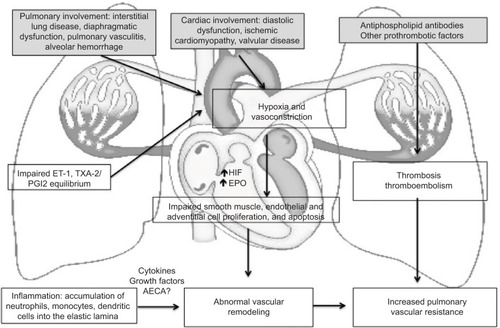Figures & data
Table 1 Independent predictors of PAH in SLE
Figure 1 A schematic representation of the pathogenesis of PAH in SLE.
Abbreviations: PAH, pulmonary arterial hypertension; SLE, systemic lupus erythematosus; ET-1, endothelin-1; TXA-2, thromboxane A2; HIF, hypoxia-inducible factor; EPO, erythropoietin; PVR, pulmonary vascular resistance; AECA, anti-endothelial cell antibodies.

Table 2 Studies with immunosuppressive medications for SLE-PAH
Table 3 Studies with PAH-targeted therapy medications for SLE-PAH
